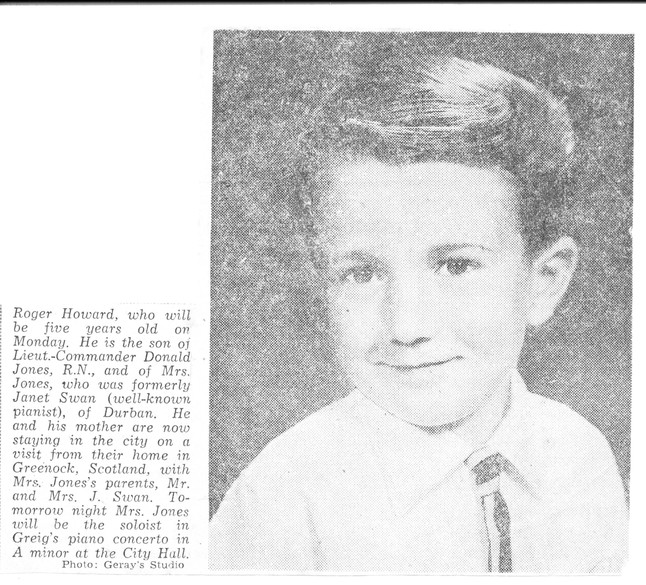Durban High School
Class Of 1964
Durban in the 50s & 60s
"At 3 P.M., May 6th, the ship slowed down, off the land, and thoughtfully and cautiously picked her way into the snug harbor of Durban, South Africa.
Royal Hotel. Comfortable, good table, good service of natives and Madrasis. Curious jumble of modern and ancient city and village, primitiveness and the other thing. Electric bells, but they don't ring. Asked why they didn't, the watchman in the office said he thought they must be out of order; he thought so because some of them rang, but most of them didn't. Wouldn't it be a good idea to put them in order? He hesitated—like one who isn't quite sure—then conceded the point.
May 7. A bang on the door at 6. Did I want my boots cleaned? Fifteen minutes later another bang. Did we want coffee? Fifteen later, bang again, my wife's bath ready; 15 later, my bath ready. Two other bangs; I forget what they were about. Then lots of shouting back and forth, among the servants just as in an Indian hotel.
Evening. At 4 P.M. it was unpleasantly warm. Half-hour after sunset one needed a spring overcoat; by 8 a winter one.
Durban is a neat and clean town. One notices that without having his attention called to it.
Rickshaws drawn by splendidly built black Zulus, so overflowing with strength, seemingly, that it is a pleasure, not a pain, to see them snatch a rickshaw along. They smile and laugh and show their teeth—a good-natured lot. Not allowed to drink; 2s per hour for one person; 3s for two; 3d for a course—one person.
The chameleon in the hotel court. He is fat and indolent and contemplative; but is business-like and capable when a fly comes about—reaches out a tongue like a teaspoon and takes him in. He gums his tongue first. He is always pious, in his looks. And pious and thankful both, when Providence or one of us sends him a fly. He has a froggy head, and a back like a new grave—for shape; and hands like a bird's toes that have been frostbitten. But his eyes are his exhibition feature. A couple of skinny cones project from the sides of his head, with a wee shiny bead of an eye set in the apex of each; and these cones turn bodily like pivot-guns and point every-which-way, and they are independent of each other; each has its own exclusive machinery. When I am behind him and C. in front of him, he whirls one eye rearwards and the other forwards—which gives him a most Congressional expression (one eye on the constituency and one on the swag); and then if something happens above and below him he shoots out one eye upward like a telescope and the other downward—and this changes his expression, but does not improve it.
Natives must not be out after the curfew bell without a pass. In Natal there are ten blacks to one white.
Sturdy plump creatures are the women. They comb their wool up to a peak and keep it in position by stiffening it with brown-red clay—half of this tower colored, denotes engagement; the whole of it colored denotes marriage.
None but heathen Zulus on the police; Christian ones not allowed.
May 9. A drive yesterday with friends over the Berea. Very fine roads and lofty, overlooking the whole town, the harbor, and the sea-beautiful views. Residences all along, set in the midst of green lawns with shrubs and generally one or two intensely red outbursts of poinsettia—the flaming splotch of blinding red a stunning contrast with the world of surrounding green. The cactus tree—candelabrum-like; and one twisted like gray writhing serpents. The "flat-crown" (should be flat-roof)—half a dozen naked branches full of elbows, slant upward like artificial supports, and fling a roof of delicate foliage out in a horizontal platform as flat as a floor; and you look up through this thin floor as through a green cobweb or veil. The branches are japanesich. All about you is a bewildering variety of unfamiliar and beautiful trees; one sort wonderfully dense foliage and very dark green—so dark that you notice it at once, notwithstanding there are so many orange trees. The "flamboyant"—not in flower, now, but when in flower lives up to its name, we are told. Another tree with a lovely upright tassel scattered among its rich greenery, red and glowing as a firecoal. Here and there a gum-tree; half a dozen lofty Norfolk Island pines lifting their fronded arms skyward. Groups of tall bamboo.
Saw one bird. Not many birds here, and they have no music—and the flowers not much smell, they grow so fast. Everything neat and trim and clean like the town. The loveliest trees and the greatest variety I have ever seen anywhere, except approaching Darjeeling. Have not heard anyone call Natal the garden of South Africa, but that is what it probably is.
It was when Bishop of Natal that Colenso raised such a storm in the religious world. The concerns of religion are a vital matter here yet. A vigilant eye is kept upon Sunday. Museums and other dangerous resorts are not allowed to be open. You may sail on the Bay, but it is wicked to play cricket. For a while a Sunday concert was tolerated, upon condition that it must be admission free and the money taken by collection. But the collection was alarmingly large and that stopped the matter. They are particular about babies. A clergyman would not bury a child according to the sacred rites because it had not been baptized. The Hindoo is more liberal. He burns no child under three, holding that it does not need purifying.
The King of the Zulus, a fine fellow of 30, was banished six years ago for a term of seven years. He is occupying Napoleon's old stand—St. Helena. The people are a little nervous about having him come back, and they may well be, for Zulu kings have been terrible people sometimes—like Tchaka, Dingaan, and Cetewayo.
There is a large Trappist monastery two hours from Durban, over the country roads, and in company with Mr. Milligan and Mr. Hunter, general manager of the Natal government railways, who knew the heads of it, we went out to see it.
There it all was, just as one reads about it in books and cannot believe that it is so—I mean the rough, hard work, the impossible hours, the scanty food, the coarse raiment, the Maryborough beds, the tabu of human speech, of social intercourse, of relaxation, of amusement, of entertainment, of the presence of woman in the men's establishment. There it all was. It was not a dream, it was not a lie. And yet with the fact before one's face it was still incredible. It is such a sweeping suppression of human instincts, such an extinction of the man as an individual."
***************************************************************************************************************************
8/5/17 Speedway in Souith Africa
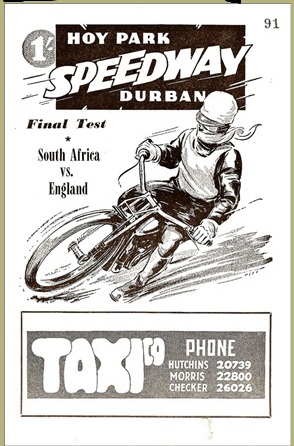
Did you ever attend Speedway at Hoy Park? How exciting was that?! Remember the Durban Hornets? Remember Leyden's cartoons of the action and the riders?
Here is a link with a huge amount of historical information to jog your memories:
..........................................................................................................................................
9/1/17 New link to films of Durban in the 30s and 40s. Did you ride on the last tram in 1949?
Thanks to Andrew Geils (Class of 1960) for sending this, for us all to enjoy:
https://www.youtube.com/watch?
..........................................................................................................................................
New Link to Face Book page: Who remembers old Durban? Posted 20/10/16
https://www.facebook.com/Who-remembers-the-old-Durban-241806852513286/
***************************************************************************************************************************
20th October 2016
SNELL PARADE MOTOR RACES
Remember the motor races along Snell Parade? Andrew Geils (Class of 1960, Michaelhouse) has sent us this link describing the genesis of these exciting events which began in the late 1930s.
http://www.fad.co.za/Resources/fair/field.htm
Graham Bell adds these personal memories:
My Uncle John (Bunton), was an avid bike racer and my brother, Richard, and I attended the Snell Parade events he took part in, in the early fifties. I met most of the "big names" in the competition. John became the first "works" rider for Triumph.
He started the Pretoria speedway track which ran for many years before and after WW2. His team was The Pretoria Eagles and their arch rivals were The Durban Hornets and The Johannesburg Lions. The latter team and track (Wembley Jo'burg) was promoted by Buddy Fuller (also a bike rider and racing car driver from pre WW2). Considerable ill feeling developed between him and my Uncle John for reasons we kids had no understanding of.
For a while we knew and met many speedway riders and when in Pretoria, in the fifties, Richard and I worked as "assistants" at the track on race night. The most exciting encounters were with the "international stars" such as Trevor Redman (NZ), Alan Hunt (UK) and the Scandanavians, including Ollie Nygren.
Hunt was killed in a "spill" around that time. We may have witnessed it happen in Durban at Hoy Park, but my memory is fuzzy. We saw a lot of speedway thrills and spills. Hunt's death was a great loss to the "sport".
The compilers of the Durban racing history have omitted the above speedway history, the bikes and side-cars, as well as the "Berman Drive Hill Climbs" which ran for a couple of years. The race consisted of riding as fast as possible up the steep winding road through Berman Bush (scaring the vervet monkeys). There was not much opportunity for spectators to observe the race, and this may be why it was discontinued.
Later the dirt bike (speedway) races were displaced by "stock cars". Arguments over pay resulted in a drivers' strike in the early sixties and the closing of the Pretoria track.
I think the Durban, Johannesburg and Springs tracks suffered a similar fate.
The world and "game" was changing, with huge (1000+ cc) motorbikes and super fast ground-hugging "formula" cars coming onto the scene in the late sixties.
My cousin Alan(John's son) raced stock cars and then some dangerously big bikes for a while but sensibly gave up and stayed alive.
************************************************************************************************************************
New link to updated FAD site, Durban in 1963 and 1973, created by Gerald Buttigieg. Many thanks to Robin Waters for sending the link.
http://www.fad.co.za/2013/01/06/what-happened-in-durban-50-and-40-years-ago/
************************************************************************************************************************
Link to Memories of Durban Personalities from our era:
http://www.fad.co.za/2012/08/08/did-you-come-across-these-durban-personalities/
***********************************************************************************************************************
Pictures of Durban in the 50s, 60s and 70s
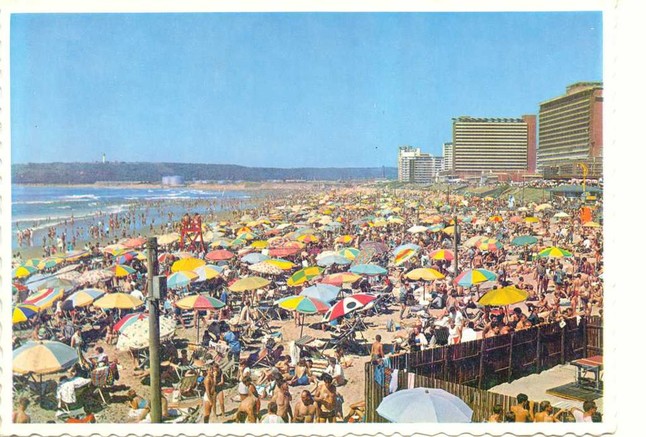
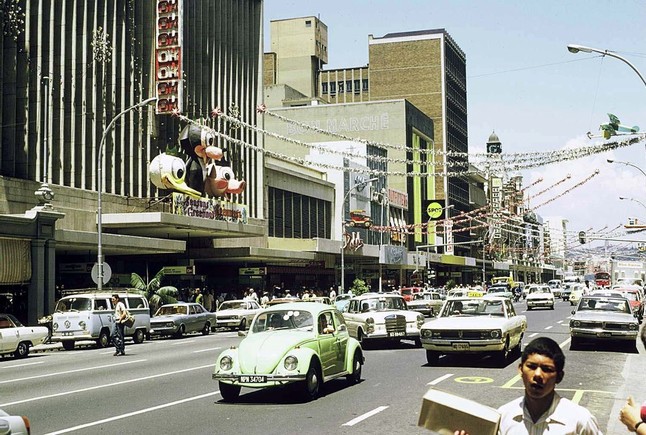
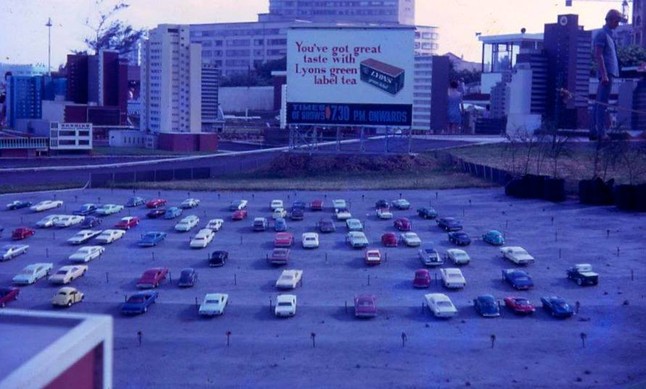
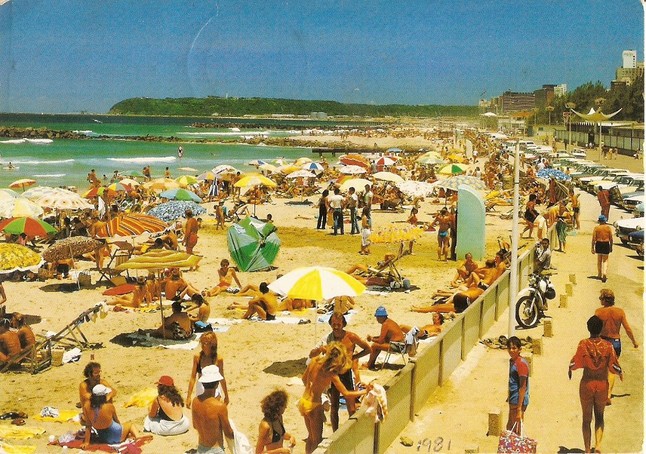
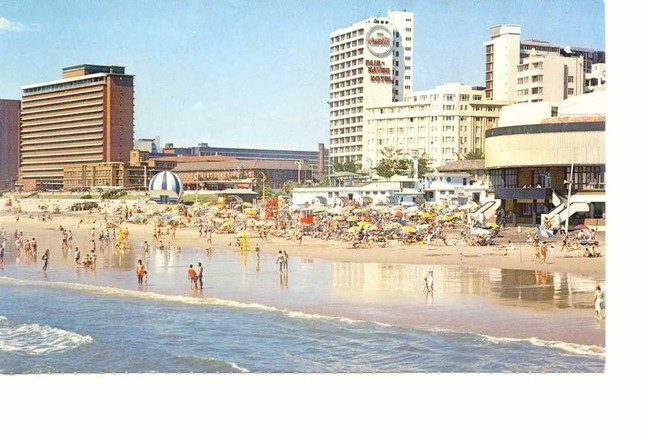
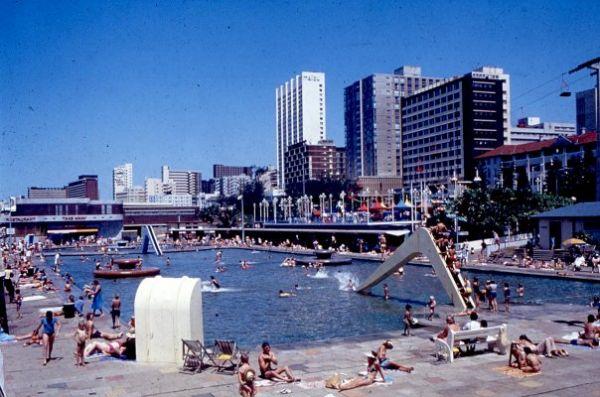
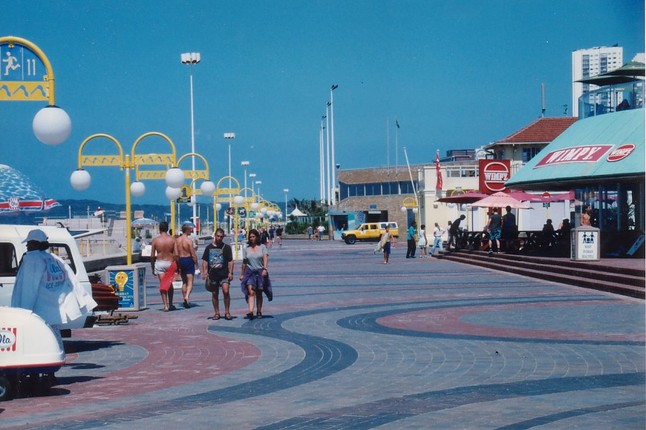
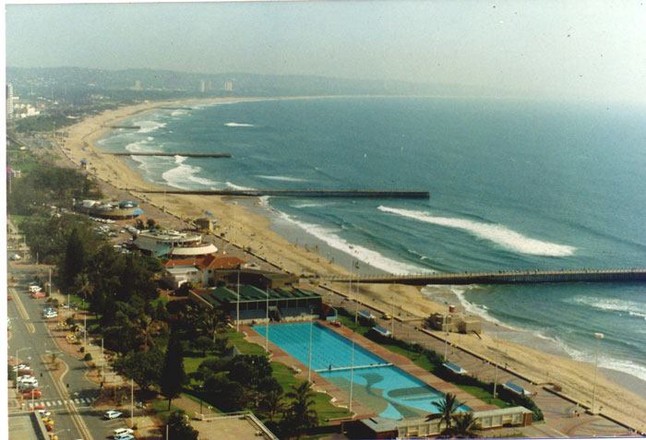
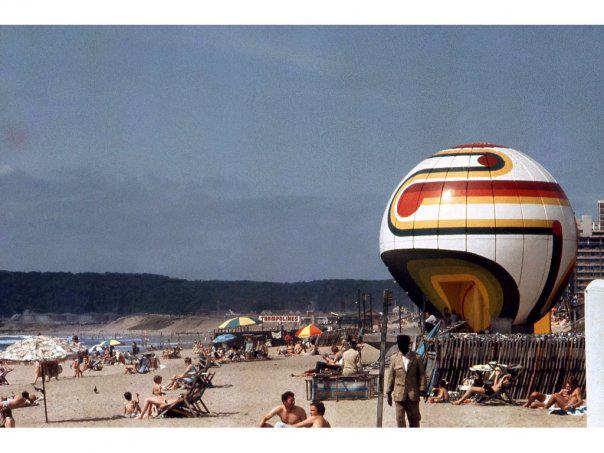
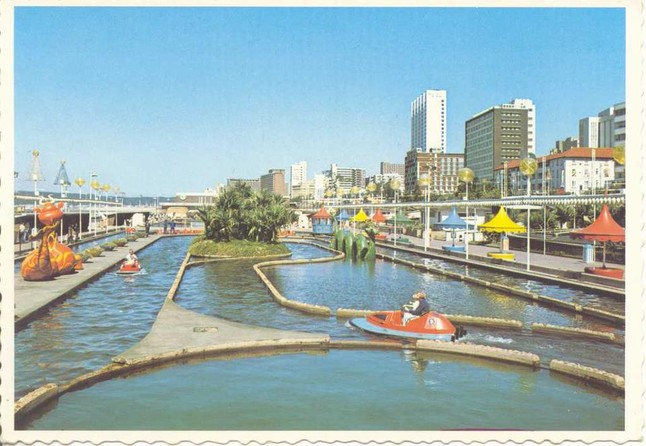
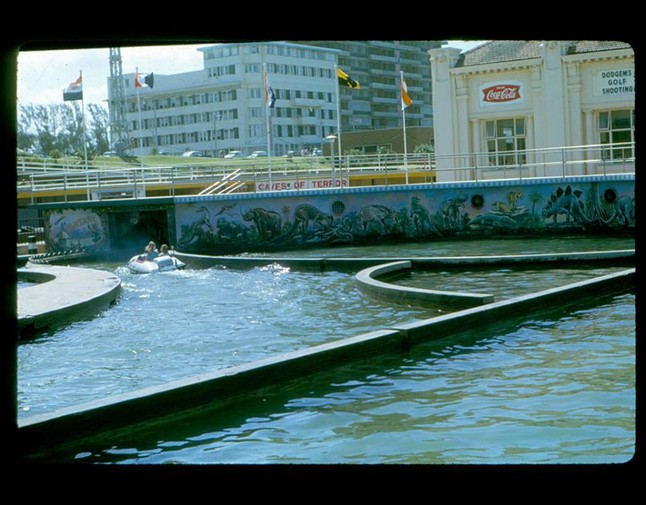
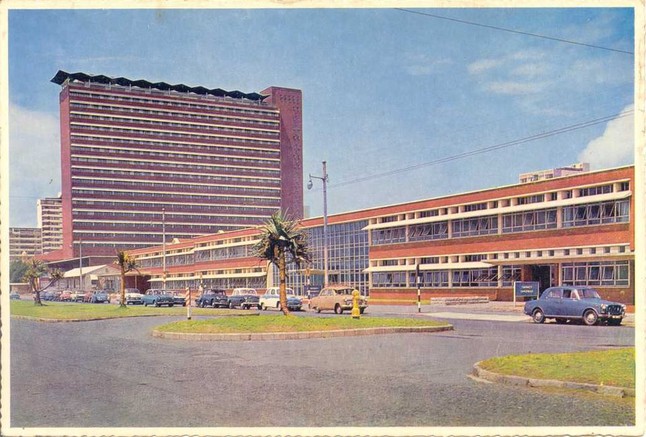
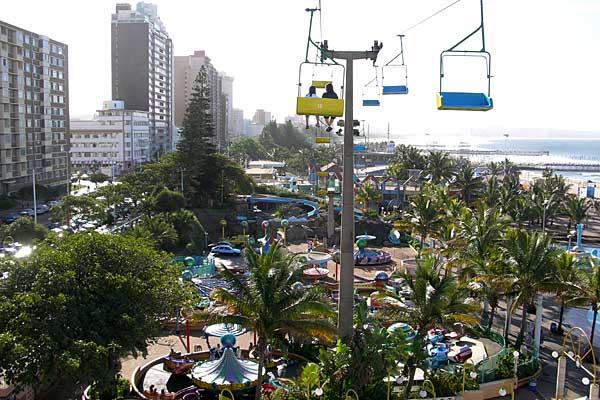
Take a Scroll down Memory Lane...
Facts About Durban: A rich resource of Durban Nostalgia:
http://www.fad.co.za/resources.php
|
Remember Davaar Kindergarten?
You might have gone there.
You might have met your wife there.
You too might have eaten monkey poo in the sand pit...
The following newspaper item features a Davaar boy (in blue and yellow tie) named Roger Howard Jones that appeared in a local paper's social pages in 1952. The cutting after that was published about Davaar when it was about to close in the 1980s. (Thanks to Ian Corbishley for the scanned article. and class photo.)
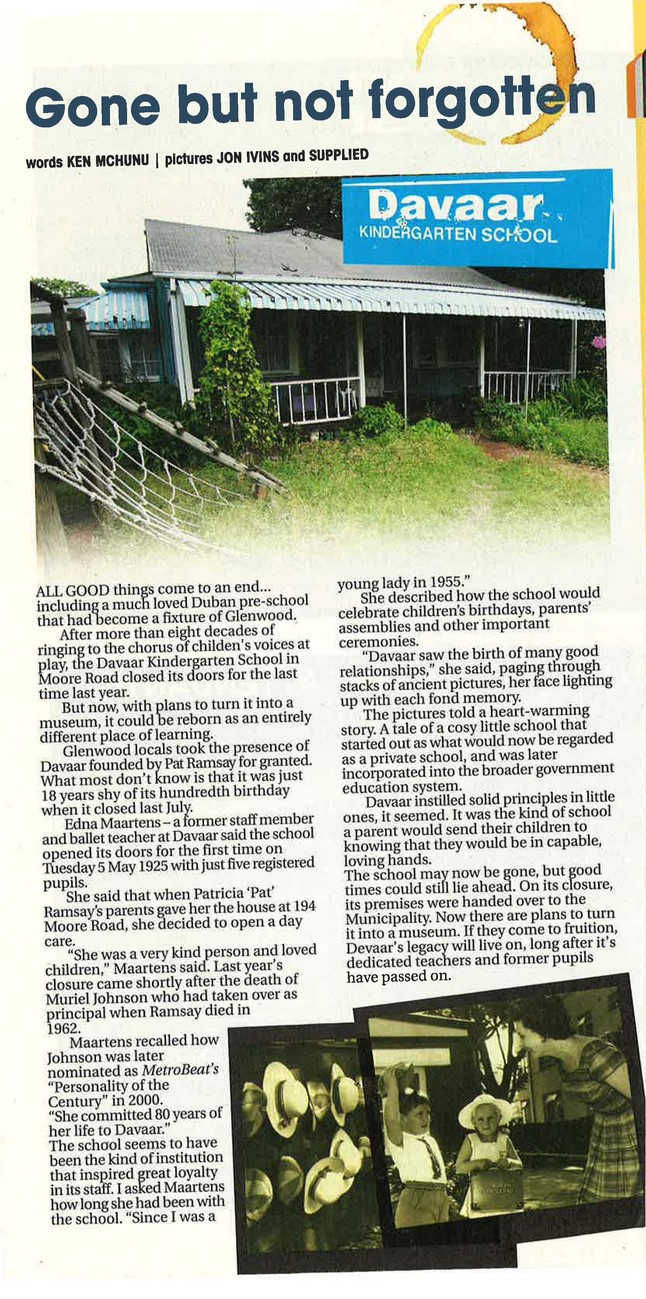
June 2013: More on Davaar, from Classmate Ian Corbishley:
My wife, Wendy, found this picture of the Johnson Sisters today - Muriel and Edna. They were both teachers at Davaar. Muriel (married name Cantor/Kanter?), our teacher in 1952, later became Principal on the retirement of Mrs Ramsey.
The picture was taken at the farewell given to me by the KwaZulu Natal Education Dept in 2000, when I decided to give up my position as Chief Inspector of Schools and move on to other opportunities in education. It was unreal to have my pre-school teachers come to my farewell, 48 years after I had left their school.
Of the 3 Johnson sisters, only one is still alive.
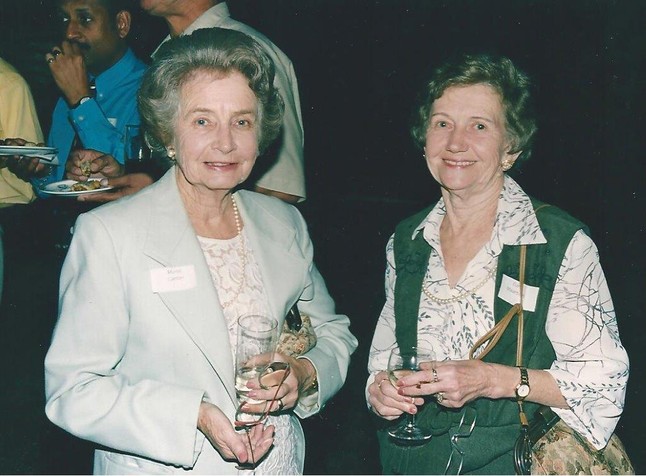
Davaar class of 1970: So cute...and the children too.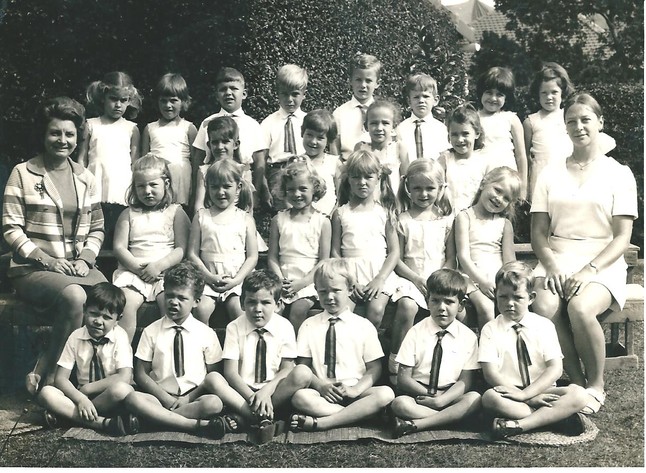
|
Above: Roger Jones at Davaar in 1952. What did you do for fun in Durban? |
|
The following has recently "gone viral" on the web. We acknowledge with gratitude the author, and the work. If in reproducing it below we are tramping on intellectual property, please contact the site management and the work will be removed. Meanwhile enjoy this trip down memory lane. What did you do for fun in Durban? By Gerald Buttigieg- August 2005 According to the current TV ad when the grandchild asks the Grannies what they did for fun, the Grannies answer that they cooked and baked. Well those Grannies if they were "young" in Durban in the late 50s, early 60s, would not have been "hip" and would have been regarded more as "squares" as the lingo of the day put it. What exactly did the young people of the late 50'/60s do in Durban for fun? Having been a young person at the time, I am recalling what we did in those days, long before TV, and when personal freedom was slightly more restricted. First of all in those days, there still existed a healthy respect for one's elders, dress code was rather formal and seemingly enforced in that you could not access some places wearing very casual clothes. Virtually no "legal organised" entertainment continued much after midnight. Alcohol was strictly controlled due to the fact that anyone remotely under age was strictly prohibited from entering a bottle store (the only retail source) where alcohol could be bought. Bars and hotel lounges (in vogue in those days) again were strictly for adults and in the main frequented by middle aged / older men and women (perhaps a World War II legacy) not so much the younger man. Bars were not the jovial, theme decorated establishments of today, more just the basic counter, a serving barman and cigarette smoke. The interiors of bars were well hidden from public view by entry screen walls or barriers. Then there was the question of transport. I would venture to say that up until the late 50s, drivers were 95% men and 5 % women. You hardly saw women driving and it was only the 60s generation that saw young adult girls take to the road as drivers. For the young male (under 18), a new form of transport freedom hit the streets in the late 50s. The …. Buzz Bike. This was a 50cc moped which could be licensed by any 16 year old whose parents could afford to buy him one. I well remember at my school in the late 50s, the awe that all the boys stood in, as the 2 buzz bike owners came up the driveway on their respective Garelli and Dik Dik. For the older schoolboy, having a moped definitely put you one above the rest, no matter how many pimples you had on your face. For the rest of us, the NDC Corporation Bus service was the way to go. It covered the whole of Durban (at the time) just about, was reliable, on time and relatively cheap. Finally, if you did not have any "bread" or "start" (money) for bus fare, you just had to resort to shank's pony. Generally, your entertainment was limited by your transport possibilities, the amount of money you had and, of course, what entertainment, suiting your age group, was available. What was "Saturday Night Out" for the general public. I would say the most popular thing was "going to the movies." The "bioscopes" (cinemas) in Durban were all centred in the vicinity of the Smith Street / Aliwal Street intersection. Starting in Smith Street opposite the Durban Library / Museum in the City Hall Building, was the Princes, next door the Playhouse. Across Albany Grove was the Metro virtually on the corner of Smith and Aliwal. On the opposite corner was the 20th Century and next door was the Embassy. Down Aliwal Street next to what was Forsdicks Motors was the Piccadilly. Isolated down on the corner of West St. and Warwick Ave was the Alhambra. In the late 60s the Ice Skating Rink in Sol Harris Crescent near the Beach Front was reduced in size and altered to accommodate two cinemas, Ocean City and the small compact cinema, the O'Connor. These were the main "movie houses" and virtually every one would be packed to capacity on Saturday night. Tickets were normally booked beforehand during the week, failing which you took your chance and stood in the queue before the show started. You can well imagine the disgruntled look of those in the queue as some individual, knowing someone way up the queue negotiated, with them to get extra seats. It just meant someone further back would eventually not be able to get in. Going to the movies was no casual affair in those days. It was strictly dress up with men wearing suits and ties and ladies dressed to the nines. The Metro Cinema used to have a notice outside that a jacket had to be worn for the late show. There used to be 3 shows on Saturday (no movies allowed on Sunday) 2 p.m. 6p.m. and 9 p.m.. Cinema goers would come into town in their own vehicles and parking close to the cinemas was at a premium but you could park at the Albany and Embassy Parking Garages or on an open space where the BP Centre now stands. If you did not have a car and were dating you had to use the Corporation buses. The Transport Department were very considerate in those days because the bus termini were all in the centre of town, mainly around the Cenotaph and Post Office, so it was not a long walk to the show but, on top of that, buses were available after the show so that you did have an option of getting home cheaply without resorting to a taxi. A drink before the show at one of the adjacent hotels was the done thing (if you were old enough) and then one joined the throng as everyone headed for their respective cinemas. Inevitably, as you stood in the foyer (either upstairs or downstairs) before the show waiting to go in, the passing parade was inspected and you checked to see who was there and especially to note who was dating whom. For lesser mortals, there were two other avenues for going to the movies on a Saturday night. For those not so well disposed to dressing up and who were impartial to the "locale", there were the "bio cafes". In Durban at the time there were two,; one being the Roxy, which was virtually opposite the Colombo Tea and Coffee Shop up West Street, and the other was the Oxford which was down Pine Street opposite the Pessoa Monument (Pine Parkade). In the late 60s a third was added, the Capri which was in Smith Street between Beach Grove and Salmon Grove. The bio cafes were cinemas where the show was run continuously from about 9 am onward till closing time which was roughly 11 p.m. You could enter at any time and leave whenever you had seen enough so, if you came in mid-show, you would see the end of the film before you saw the beginning ,unless you sat through the whole show again from start to finish. The dress code for the bio cafes was totally casual so, if a good show like "The Dambusters" was showing on the weekend, the whole family would be there. One tried to time one's entry with the start of the show and these times were normally advertised outside. There was no booking of seats for the bio cafes and, as you entered the dark murky cinema from the outside brightness, you blindly looked around for suitable seats. If the place was full, families would be split up, sitting here and there but, as soon as interval came round and an exodus resulted, you would see families madly regrouping. For the cheap entrance fee of about 15 cents, you also got a free cool drink or a cup of tea or coffee. (My mother always warned us to drink as if we were left handed so that the cup would be turned around!!) These cinemas were basically for the working class family but they did provide a form of entertainment. The interiors were totally undecorated, and there were no screen curtains. Occasionally you heard the crunch as one of Durban's finest, those notorious cockroaches, met an untimely death. The interiors were not air-conditioned but fresh air was circulated by roof fans. Smoking in all cinemas was allowed in those days and as the average working class adult was a smoker, the bio café interiors were heavily smoke filled. You would see the projected light battling through the thick smoke haze to reach the screen. On either side of the screen were two emergency exit doors with lighted signs above them indicating in large red letters "EXIT / UITGANG". Occasionally. as one of the "shorts", (short film before the main show), one would get a bouncing ball sing-along which the audience joined in. Mostly post war vintage tunes such as "Daisy Daisy, give me your answer do …", the general response was pretty good and the audience even used to sway in their seats. If a cartoon was shown, the laughter was spontaneous and hearty. Looney Tunes, Bugs Bunny and Elmer Fudd ("WHAT'S UP DOC?") , Mr Maggoo, Tom and Jerry, Tweety and Sylvester, and Porky the Pig, come to mind. During the week these bio cafes were the retreats of those school boys who were bunking school! There were a few other conventional suburban cinemas in Durban at the time catering for the people who lived in the vicinity. There was the Avenue which was a very old corrugated iron building in First Avenue, near the Queen's Tavern. The Alvin at the lower end of Berea Road, the Royal at the top end of Smith Street, not far from the old Technical College, the Planet in Umbilo near the old Congella Fire Station, the Alex on the Bluff which occasionally had shows and the Rex in Durban North (Broadway). A cinema was added to the Lido Complex on the Beachfront in the early 70s. Alternatively, for the younger and dating set, as well as the mobile family, there was the Drive In. This American phenomena which took off in this country and and Durban had three Drive Ins in the 60s. Durban Drive In (Brickhill Road), Bluff Drive In (Tara Road), Umbilo Drive In (Oliver Lea Drive). There was also the Pinetown Drive In. The Drive Ins were very popular and long queues of cars would gather for the Saturday late show, waiting for the earlier show to exit. Once the early show evacuated, there used to be a stampede as cars rushed in for the best vantage points. Each Drive In had catering facilities and hamburger and chips, etc., were big sellers. There were a couple of problems with the Drive In. If it started raining, the car interior would heat up with the windows closed so the windscreen misted up. This was problematic if you were actually watching the show. A raw potato cut in half and rubbed on the windscreen used to help. Secondly, the speakers connected via a heavy duty coiled cord, two to a pole, were badly maintained and if you hit a non worker on a night the Drive In was full, you could not move to another position, so you either watched a silent movie or just left. Thirdly if you landed up close to the front you ended up with severe cricks in the neck and boggle eyed as the screen was so big in front of you. On more than one occasion, I noticed "free loaders" getting out of the boot once the car had parked! Drive In goers were not particularly understanding people. If you came in a bit late and forgot your lights were still on shining onto the screen, you would be blasted with a cacophony of hooting from everyone else. And on exit, woe betide the one that tried to sneak in front of you as you headed for the exit lanes which were badly maintained loose stone pathways. After movies at the main cinemas, generally everyone exited and went home, but a trend was started when Ivor Kissen opened a coffee shop in Albany Grove (the Troubador?) and it was the in-thing after the show to go and have a late night cappuccino and a slice of cheese cake / blintz. All liquor sales and entertainment stopped promptly at midnight and, next Saturday, the whole process would be repeated. Another way of getting out and about on a Saturday (living in confined flats was quite common then) was to take a slow stroll through town. West Street in those days was the shopping hub of Durban. It virtually was one big open air mall in a sense. From Gardiner Street right up to Broad Street and even beyond to Russell Street, with arcades and side lanes in between, there were numerous shops all displaying their current wares. The bigger department stores all had specialized window dressing staff and the standard of presentation was extremely high. Window dressing was done competitively between the various stores and, dependent on the social calendar and the season, generally reflected the time of the year. As a family, my mother, sister and I and my aunt and her husband and their family would quite often on a Saturday evening walk from one end of West Street right up to the Bombay Bazaar and back. The children knew where all the toy shops were; King's Sports, Playdays, (London Arcade), Regwoods (Hooper Lane), Jix, OK Bazaars, the Hub, so they would go on ahead and on reaching the shop point out to each other the treasures in the showcases. The pavements were covered in square cement blocks and my girl cousins would hopscotch some of the way or play "Don't step on the lines". Greenacres, Ansteys, Payne Brothers, Stuttafords, Henwoods, all had multiple show windows. Woolworths, funnily enough, was very small in those days with an old shop near the corner of West and Gardiner. It had a wooden ramp off the pavement to the entrance and had wooden floors throughout. Greenacres used to have island showcases which you could wander round. At Easter weekend, Payne Brothers would have just a large draped Cross in one window to mark the season. Christmas time was special for all the shops excelled themselves and the City Electricity Department would put up their festive street lighting. Cars could be parked anywhere along West Street (it was two way then) and as car theft was non existent, there never was any anxiety that it would not be there when you got back. At the corner of West and Broad Street was an ice cream outlet (Polar Bar?) and normally everyone got an ice cream cone at this point, crossed the road and walked back down the other side. If it was still early enough and the children were not getting ratty, then prior to returning home, we would all get into my uncle's small car and go down West Street heading for the Beach front. We would turn left at the Beach Hotel and drive along Marine Parade. Just beyond the Rachel Finlayson Baths the road dipped towards the sea and one drove along the Lower Marine Parade which skirted the sea front. Here you joined a queue of cars driving at funereal speed, past Model Dairy, Kenilworth Amusement Park, Newtons, the old paddling ponds, the new (now demolished Aquarium) and then turn right into West Street again and then off home. I have digressed here a bit so let me return to what the younger people did to have fun. It must be remembered that in the 50s and early 60s, the youth were being influenced to quite an extent by the radio. Portable radios had just come onto the market but they were bulky by today's miniaturised standards and driven off a 22 volt batter,y which was quite heavy and expensive. The early portables had valves as transistors were yet to change the landscape, although they had existed since about 1948. The Rock and Roll era had begun in the early 50s and the SABC was not very partial to this type of music. Occasionally some rock and roll music and new record releases were played on a SABC programme in the evening, "Mr Walker wants to Play"; John Walker was the host. But the station to tune into was LM Radio based in Lourenco Marques (now Maputo) in Mozambique. LM Radio was heard on short wave only so if you wanted to listen to it you had to have a radio capable of tuning in to shortwave. ( I often wonder if that was the origin of the slang "to tune someone" i.e. to inform someone with respect to putting him right). There was no FM in those days only AM and SW. LM Radio, I think was on the 41 metre band, and was quite crackly and the signal wandered at times, so now and then you had to retune to the station. The station used to open with a statement in Portuguese which I never did get to know, but included was something like "presintine de un descultos" and the Portuguese announcer in "English" stating "Dis is de Radio Club of Mozambique". One of the most popular announcers on LM Radio was David Davies who was taken with Rock and Roll music. The LM Hit Parade was compulsory listening and he used to end his show at midnight saying "To you and to you and especially to you Good Night." The influence of Beat and Rock and Roll music was spread by the visit to Durban of Tommy Steele, then Cliff Richard and the Shadows in the early 60s. And then came Beatlemania. This era resulted in a rash of four-man bands erupting in Durban. A live band, consisting of a lead, rhythm, and bass guitarist plus a drummer and one in the group who could double up on vocals became the in thing. I am not sure who started the idea, but in the late 50s, "sessions" became the in place to go to for the younger set. "Sessions" were basically a live band playing at a venue where the younger crowd could "hit out" (rock and roll) ostensibly as a fund raising event. Funnily enough the M.O.T.H. (Memorable Order of Tin Hats) Shellholes, some of which had suitable halls, became popular venues for these sessions and I would imagine substantial funds were raised. Sessions caught on and, by the grapevine, one would learn who was playing where and when. Sessions happened on Friday or Saturday nights. They were supervised to an extent by the owners of the hall and, strictly speaking, no liquor was allowed on the premises. Off the premises was another matter. Sessions were loads of exuberant fun where the youth could let off steam and express themselves in the music of the day, and there was many a "raut" (loosely a fist fight) amongst those attending. At that time, boys danced with girls. That was it. There were no "rings" or single dancers or groups, as at today's raves. You either brought your own partner, a "chick" or you picked one up there. If "the talent was min" (no suitable partners available and looks were a serious factor) you "lost out" and spent the evening as a spectator. Girls would arrive in groups (moral support) hopefully looking to be asked to dance or "scheming" to get to know someone they had see but, if they weren't asked, that was the sad part of it; they sat out as wall flowers. That was the harsh reality of the time. Conflicts arose and tempers flared sometimes over crossed lovers or when slightly inebriated louts started spoiling things and, once ignited, the session could erupt into a terrible all out fist fight. Liquor was consumed off premises by some under age individuals and inevitably that was the start of the trouble. Sometimes matters really got out of hand with chairs being thrown about, damage to property etc. The Police would be called out and they would arrive in their Dodge van with the long "Scorpion" aerials whipping about. However the popularity of these functions and the crowds they drew resulted in all sorts of organisations holding them to raise funds. I know of a couple of today's churches who raised funds for their building programmes in such a way. Dress standards going to these sessions were strictly of the time. White T Shirts and denim jeans (ala James Dean) were "in" as were white socks and your "skats" (shoes) were either highly polished Jarman toe caps or brown suede buccaneers. The Chukka boot was also popular. Also popular were silver grey (linen) stovepipe trousers, with a thin black leather belt or silver chain belt with white long sleeve shirts, the sleeves folded three quarter up your arms. In the back pocket was the compulsory long thin barber's comb to comb the big wave of hair on your forehead, which was also held in place with a good dollop of Potter and Moore's Brilliantine (SAE 120!). For the girls, beehive hairstyles were in, wide circular skirts and blouse tops, low heeled pumps. Denim jeans were still a predominantly male thing. As the bands that played at these sessions became more and more popular, it was a natural progression that their talent and pulling power were noticed. It was not long thereafter that the local bands started playing at dedicated venues and this brought in the Cookie Look era. Not sure why it was called Cookie Look, perhaps it was a place to come to see the "cookies"! Cookie Look, if I remember, was started at the Claridges Hotel on the Beachfront. What the Hotel had done was set aside an area on the ground floor near the foyer which became the Cookie Look venue. A local rock band was hired to play for the period 5 p.m. to 7 p.m. on a Friday and Saturday night. Being licensed premises you were supposed to be over 18 to gain entry. The band played all the current popular rock tunes and a dance area was provided. As drinks were served, the Hotel was set to make a profit. The concept became a hit and soon packed houses were the norm. I can well remember the anticipation as one approached one of these venues, the 60s rock tunes being mimicked note for note from the originals by the local bands, volume coming out of VOX amplifiers / speakers at the extreme. It kind of wound you up. Being in licensed premises and one up from a session, male dress started to follow the overseas trends. The fashion for the young male became a Beatle look-alike "Time to Shine" suit, made of Trevira material, a type of linen which gave off a sheen. Pants were straight cut stovepipes, suit jackets body fitting, narrow collar and lapel with three button fastening. Coloured shirts had started coming in as well, displacing the basic white, and collar bars threaded through holes in the shirt collar were popular. Ties were either square bottom, string or the new innovation the Twister Tie, square bottom, narrow with oval sides. Chelsea boots ala Beatles were non-negotiable and the best Chelseas could be bought from the Indian shoe merchants in Grey Street. As for that so were the suits at such shops as Dominions, Lords or Govansons. Possibly the four most popular "Cookie Look" venues in Durban were the Claridges, the Londsdale Hotel's Bull Ring, the Al Fresco (Esplanade Hotel on the Victoria Embankment) and the Macabre at the Butterworth Hotel (Soldiers Way). The Esplanade Hotel no longer exists but used to be adjacent to the Royal Natal Yacht Club (also demolished). The Al Fresco was very popular on a Friday night, being central in town and as an after work venue, also operating 5 to 7pm, after which it converted to a restaurant. The bands I remember playing there were Dickie Loader and the Blue Jeans, Dunny and the Showmen and The Diamonds. You would often go on to a house party (popular in those days) or even the late movie show, afterwards, and the session gave you 2 hours to find a date if you didn't have one. Basically you eyed someone, asked her to dance and if you "hit a luck", she agreed to a "date". If you had your own "cab" (car), things were "sweet" (on the upside) as the transport improved your chances of a date at such short notice, because invariably young girls in those days lived at home or in hostels and curfews had to be obeyed. Inevitably she had a friend with her so "home" had to be phoned first to say where they were going and how they were getting home. Hence, if you could not get her home in time you lost out. I was quite familiar with this routine. If you had "no luck" you then diverted to Plan B which was to go first to NAWRA House in St Andrew's Street, not far from the Al Fresco. This was the Natal Anglican's Women's' Residence Association, a hostel for young single girls. The secret here was to have a contact in the hostel. You would arrive there, (you could not get beyond the entrance) and ask to speak to so and so, your contact. She would be paged and, if she was in she would come down and you would explain you are looking for a blind date or two/three depending how many mates you had in the car outside waiting. Your contact would leave you at the reception whilst she went and asked around and sometimes you were lucky, sometimes not. If Nawra House, failed you could do the same routine at Walsingham, off Berea Road (another Women's' Hostel) and try again. With no cell phones in those days, getting a date at the last minute was "hard graft" (hard work) so one inevitably had one's little black book which you used to organise your weekend entertainment. in advance. On occasion the male group I went around with just got together on a Friday or even a Saturday night and would bond, as the modern day term is. We would leave girl friends at home and meet at the Empire Snooker Saloon, which was on the second floor of an old building in Field Street near the Esplanade. You got to the Saloon via a narrow staircase which carried on up to a third floor where there was a dance club of sorts. I have an idea it was called the Balalaika. More of this later. Entering the Snooker Saloon, you were hit by a wall of old cigarette smoke, a deep haze, lighting at belt level coming from the tables' shaded lights only. The snooker saloon smelt of old cigarettes, nicotine and stale air. You saw "Joe" the saloon minder, an old man, in the corner and waved hello. He knew us as regulars. If all the tables were full you sat on wooden benches lined up along the walls until one became vacant. In the meantime you selected a cue from the motley range they had in the stands around the walls and waited. Inevitably the wait called for a smoke, so you added to the haze. Eventually a table became available and the group would "dubs in" to pay for the table, about 25 cents a game. There were rules displayed on the shades of the table lights and on the walls which included, Do not smoke over the table, Do not rest your cigarette butts on table's edges, Do not climb on the table, Use a rest, No drinking allowed on premises. Being amateurs, games (mainly snooker) were relaxed and the fluke sinking of a red brought with it a tirade of "yeahs" and "come off it" and "calling all pockets". Missing the ball, miscuing, sinking the white ball or, heaven forbid, scraping the green baize with your cue released a torrent of expletives. On reflection, those were happy hours, one never gave a thought to your car downstairs, getting hijacked or held up in the street. During games a variety of subjects would be discussed, latest dates, studies, work situation, what to do next Saturday or weekend, car problems, whatever. We would play games up to closing time which was about 11 .30 pm. Getting back to the dance club upstairs. On Saturday nights a boereorkes would take over the club and the upstairs party goers would belt it out thumping on the floor to the sounds of a trekklavier (concertina), banjo, heavy electric bass and drums. Some of the music was quite catchy especially the "seties". The snooker players occasionally would all shout out "balke" when the crowd upstairs were really going hammer and tongs! Inevitably, as one started serious dating, the tendency to wanting to be alone became more prevalent. This was the "going steady" period or in Afrikaans "ge-kysed". Once you had reached this stage and word got round, both of you were virtually out of circulation! Saturday nights then started becoming "private sort of affairs" and it seemed you just not could get enough time together. From being wanting to be with the crowd, you slowly drifted away and did much more sedate things, like going to play Putt Putt, either at the course near the Blue Lagoon or the one which was also on lower Marine Parade, ten pin bowling in Brickhill Road (they also had an indoor putt putt course), spending time at the Kenilworth or Newtons Amusement Park on the beachfront, walking along the lower Marine Parade beachfront, going for a Saturday night drive and ending up at the Tropicale at Albert Park, the Cuban Hat or the Nest (lower Marine Parade) drive in cafes. The Cuban Hat and Nest were located side by side directly in front of the entrance to the Rachel Finlayson (Beach Baths). These two locales were where you showcased your "cab" (motor car) or your "iron" (motor bike). At the time there were distinct sets of "groupies" car wise. You had the Mini , the Cortina , the VW Beetle and, to a lesser extent, the Renault Dauphin. If you had a Mini, Cortina, Dauphin, it had to be modified, whereas the Beetle was preferably standard but with all chrome accessories such as chrome eyelids on the lights, chrome wheel trim rings, chrome anti scratch plates behind the door handles, chrome strip on the rear air intake, chrome stone guards on the rear wheel arches. These went along with the heavy double chrome bumpers which were fitted as standard. Some Beetles had modified single exhausts. The scene was to show yourself off as being a standard Beetle yet being able to keep up with a modified Mini over a distance robot to robot! An early form of street racing. However, at the Nest or Cuban Hat, your car used to come under scrutiny of all those parked in the respective bays. Having had a Beetle at that time, it was the done thing to enter slowly and show off your gleaming paintwork and chrome. This you had done on Saturday afternoon so that your "steady" would be just as proud of the car as you were. Minis could not compete on this as they had little chrome trim, and they used to come roaring along announcing "I have been modified". Likewise the Cortina, this car was the modifier's dream and I remember one individual who had a Cortina, and who would, for the entertainment of those there, roar out and exit with a "screeching wheelie" burning rubber as his rear wheels "made smoke". A slipped gear change and he would get a derisory hoot from all watching! Near the kitchen area of the café, the bikers would congregate with their "irons". These were the days before the Hondas and Suzukis had taken over so you saw BMW R60s, AJS, Norton and the Triumphs. Harleys were virtually unheard of, and the only ones I remember at the time being World War 2 vintage still with Vee Motor and a gear change on the side of the tank! There appeared to be two/ three biker groups then. There was one that gathered at the Nest/ Cuban Hat, and the other at the XL tearoom, which was some distance away near the bottom end of West Street opposite the then Claridges Hotel. These were the "other bikers" or "brekers" (Afrikaans for Breakers) . This seemed to be the tougher element. Another group used to gather at the Blue Grotto, a café then at the Lido on the beach front. At the Nest / Cuban Hat, once you were parked, an Indian waiter would come and take your order. Staff used to be loyal in those days and, being regulars you, got to know most of them. "Eh Lahnee what you all order?" Double thick milkshake. When the waiter returned you gave your window a half a turn wind up and he would hook the tray on your window and place an extending arm under the tray against your door. All hell would let loose if that extending arm did not have its black rubber washer to protect your paintwork from getting scratched! Most of the waiters knew better. Sometimes the Durban Surf Lifesaving Club, which had a clubhouse above the Beach Bath entrance, would be having a session but, if you were not a beach bum, you basically were not welcome. Talking of beaches, of course, that was a daytime fun thing for young people but, again, certain beaches were for certain people. The "in" crowd, who wanted to be noticed, were at North Beach opposite the Beach Baths. You virtually had to have the body to show here and, when the Durban City Council unbanned the bikini, this is where the guys came to ogle. South Beach other side of West Street was for the general public and holiday makers. Addington Beach was for the loners, those that wanted to get away from the madding crowd, whilst Sunkist, which was virtually opposite the Durban Country Club, was where a fair amount of racial mixing took place between white and Indian communities. I remember Durban beaches being quite strange in those days (changed any?) because the sand seemed to have a kind of black (metallic) powder in it and after walking in the sand your feet were left blackish. Surfing had become popular in the early 60s with the advent of the glass fibre boards, although the early versions were longboards and still relatively heavy. I remember at Addington someone had a masonite wood surfboard which was left parked against a pumphouse on the beach. We tried to lift it once and it took two at least to carry. Perhaps it was an early WW2 "X" craft! We never took it to the water fearing it would sink with all hands. Body surfing was the done thing or else you had a small wooden plywood bodyboard with turn up nose with which you surfed. The Beach Baths were popular at the time as well. What was nice at the Baths was that you could pay your entrance fee, which I think was about 10 cents and you went into the change room and picked up a galvanised clothes hanger basket in which you put your clothing. This basket you handed in to an Indian who supervised the locker room and he in turn gave you a black rubber band with DC and a number imprinted on it. This you put round your ankle and your clothing was safely stored away for the day. You had free access to the pool area and could go to the beach and return as often as you liked. Also helpful was that you had access to a toilet (there were not many around the beach at the time) and at the end of the day you could have a lovely shower, get rid of the black sand, and go home minus the "sticky". One could carry on with numerous other activities that the young people were involved in, which today seem to be waning or low key. Sunday Hockey was very popular with about 6 to 7 men's leagues running. Women's leagues were on Saturday. Queensmead was the focal point but club grounds were scattered around Durban and Amanzimtoti. Amateur Soccer was also keenly contested, and started attracting big crowds when the NFL had professional teams like Addington, Durban United and Durban City. Occasionally British First Division sides used to visit and I remember seeing Wolverhampton Wanderers play Natal 1957 (WW 5 NTL l ), Preston North End play South Africa in 1958 (SA 5 PNE 3) and Bolton Wanderers play South Africa in 1959 (BW 1 SA 0). All games played at the Kingsmead Cricket Ground, which doubled up as the soccer venue in winter. A lively Sunday Soccer League of amateur clubs was also run. Rugby, then totally amateur as well, was keenly followed although (if I remember correctly Natal never won the Currie Cup till many years later). I think up until then Natal's 6-6 draw (1960) with the mighty All Blacks, including Wilson Whineray, Don Clarke and a young Colin Meads, was their finest hour. Cricket, tennis, baseball, water polo all ran leagues and were well supported. On the less physical side, fishing from the North Pier was popular, and the whole Bay could be fished from any of the berths dotted around. A sport which used to attract attention was open air boxing. There was a site along Umgeni Road, near the Indian Temple where young black hopefuls would take on each other, long pants rolled up, shirtless, and without mouth guards. The ring was a demarcated area on the ground. Passing traffic would pull up and watch a few rounds and it seemed anyone could take on anyone. Also in the same area but not as common, young Black youths would take each other on at stick fighting. I seem to remember the combatants would tie a white handkerchief to a leg, arm or round the head. I think I have covered the majority of activities the young folk used to indulge in to make up free time and weekends. Writing these reminiscences has brought back many memories, thoughts of crazy things one used to do in one's youth and characters one met along the way. |
